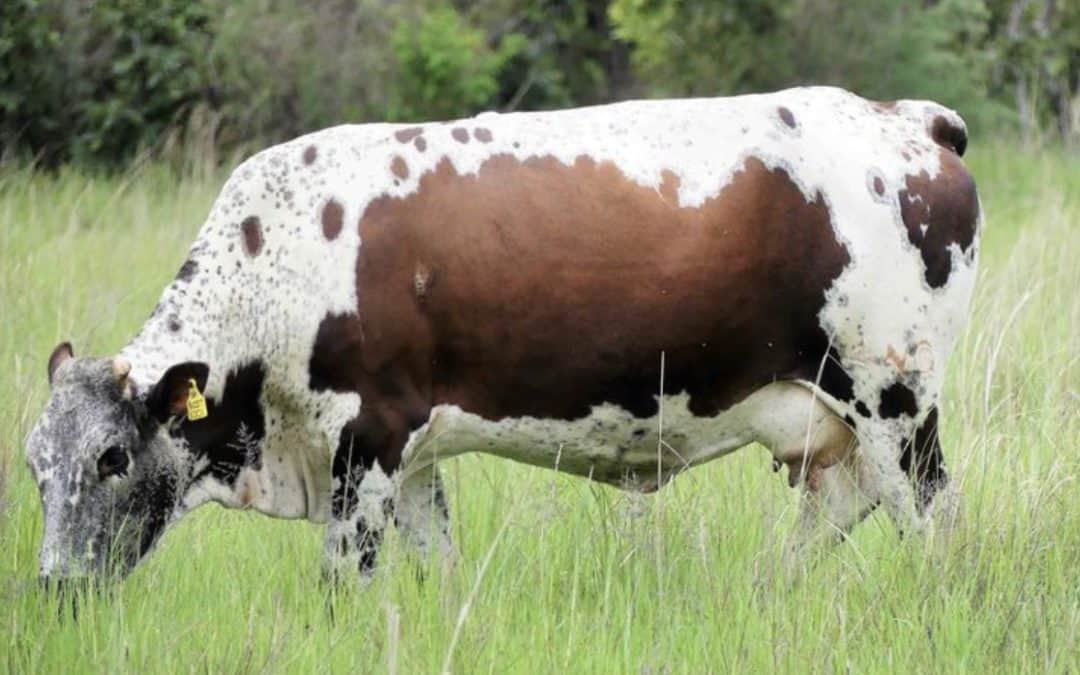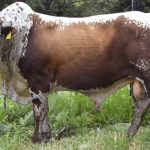ZIMBABWE HERD BOOK-YEAR OF THE NKONE 2023
NEWSLETTER FROM HHN and MH NKONE STUDS
No 1 (2ND OCTOBER 2022)
By SEKURU
We were fortunate to purchase a nucleus of Nkone breeding cows, heifers and 2 bulls from Ian Patullo of Anglesea, Matopos at the end of 2018. These genetics go right back to the original Nkone herd at Tsholotsho, established in 1946. We run the two studs as one herd and they are on leased grazing about an hour northwest of Harare. In an effort to promote interest in our Society and Nkone Breed I have decided to write a periodic newsletter on farm and livestock matters concerning our herd and also general and specific observations regarding cattle breeding to create discussion.
Every Thursday is dipping day and every fourth Thursday is monthly weighing day. I really look forward to weigh day. We keep comprehensive weight records from which we gain valuable management information. Experienced eyeballing picks up a lot but a well-maintained and calibrated scale will pick up gains, losses and trends much more precisely, long before your visual appraisal does.
A combination of higher temperatures, dosing for roundworm and fluke 6 weeks ago, salt urea lick, panicum repens coming away nicely green on the edge of the dam as the water level recedes, and proximity to the start of calving (in a months’ time) have all contributed to our females showing positive weight gains in September. They will be going into calving at a condition score of just under 3 on average.
We are excited by the upcoming calving season. PDs indicated an overall pregnancy of 87% overall from our two imported stud bulls in a 42-day bulling season last February/March. This is our second year of a 42 -day bulling and we hope that we can keep it up in the future – if anything can do it, the Nkone can. The imported bulls should have a very positive effect on our progeny and will hopefully help offset some of the shortcomings in our cow herd. We are looking at bringing down size to a more functionally efficient mature weight. In our case this seems to be a mature cow of 400 kg average weight. We need to increase capacity, maintain good pigmentation and early maturity. Make no mistake our cows are pretty good and well adapted but we must strive to keep improving the positive traits while maintaining a hardy, fertile cow herd adapted to our tough natural grazing conditions.
Bulling of heifers is always a problem. They are often either too young or too old to fit into the main bulling. They have a tendency to get into calf when you don’t want them to. Heifers calving at the wrong time of the year mean having to strategically feed them supplement or forgo the second calf the following year. I think that we have decided to leave all yearling heifers with the main breeding herd at bulling when 12-14 months old, and a small percentage of quick maturing heifers will get into calf. These should be selected to become our more efficient breeding cows in the future. The remainder will be bulled as 24-month heifers 21 days before and then through the main bulling of 42 days. They will thereafter fall into line with the 42-day bulling the following year.
There are still many questions – Can our heifers breed at 12-14 months, calve at 24 months, still raise a reasonable calf without needing extra feed and produce a second calf the next year? Will they grow out to our expected mature weight? Nkone are known for their longevity so alternatively, should we not bull them at 2 years old to have their first calf at 3 years old? They will be well grown out, should produce a calf every year and make up for the missed first calf and keep producing up to at least 10 years old. Yes, we know about early maturing, early age at first calving and fertility, but all of this needs some serious consideration.
The Nkone Cattle Breeders Society of Zimbabwe are delighted and privileged to have the opportunity to make Dr Japie Jackson and Mr. Ian Patullo, Honorary Life Members of our Society. Dr Jackson has spent a lifetime farming, promoting, researching and attending to the health of Zimbabwean Nkone and other Indigenous cattle as a veterinarian. He is an authority on their history.
Ian Pattullo is well known and respected for his Anglesea Nkone and Jersey Studs at Matopos. Ian has farmed his Nkone at Anglesea for more than 60 years and many of the Nkone herds in Zimbabwe are founded on Anglesea bloodlines.
“An adapted animal requires fewer inputs to fulfil its production function – reproduction and growth”. Thanks to Sentrale Nguni, SA.










